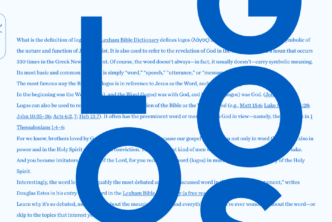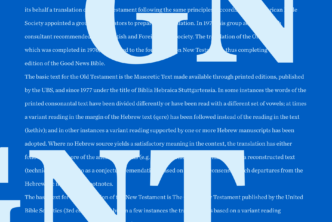When you don’t know the Greek alphabet, reading commentaries and reference books can sometimes feel like analyzing a redacted document. Greek and Hebrew words look so foreign to English readers, they might as well be covered with a black bar.
To make matters worse, since the script form of Greek letters developed over time, even the same word can look like different words. For example, the same word is represented as ΛΟΓΟΣ, λογος, and Λογος in one brief excerpt from the Pulpit Commentary.
However, even if you don’t know the meaning of that Greek word, knowing how to pronounce letters and words in Greek immediately makes this important commentary more understandable. You’d see and hear that these are all variations of the same word: “logos.” Learning theology and understanding the Bible is difficult enough without encountering garbled blank spots caused by a lack of familiarity with the alphabets of the biblical languages.
Master Greek Essentials in a Weekend
I’ve worked with the Mobile Ed team to create a new course that solves this problem. You don’t have to be an outsider when it comes to original language references for the New Testament. My new course will help you master the Greek alphabet. You’ll be able to read Greek words aloud in just a few hours, and will even get a head start on biblical Greek vocabulary. After working through this course’s interactive games and eight short videos (under 10 minutes each), you’ll be able recite the Greek alphabet, pronounce Greek words, read Greek passages aloud, and more.
This is the most interactive course Mobile Ed has ever produced. It’s packed with all sorts of innovative and fun ways to learn the alphabet. Practice hearing, seeing, and writing letters with new interactive activities. Consult clickable charts so you can hear sounds as you review or focus on learning specific types of letters. There are even printable charts, an animated music video to help you memorize the alphabet, and a Faithlife group so you can learn in community.
Learn more about learning Greek today.
Because there are two different approaches to Greek pronunciation, this course provides alternate tracks for learning either a reconstructed historical pronunciation (Koine) or a conventional academic pronunciation system (Erasmian). If that sounds confusing, don’t worry: you get both versions of the course, and each one comes with an explanation of each system, so you can make an informed decision about which approach to learn. When you finish this course, you’ll no longer have to skip Greek words in your reference works. You’ll even be reading John 3:16 aloud in Greek by the end of the course.
***
Ready to take the first step to learning Greek? Get started now.





